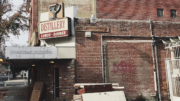By Scott Thomas Anderson
Visit Sacramento held a cultural tourism symposium last week, focusing on how to properly showcase the deepest fibers of the Capital City.
Obviously, there are economic stakes to cracking that code, though I would argue the question speaks to something deeper in the local psyche. Sacramento’s own Greta Gerwig, the writer-director who’s been in the news for crushing the Box Office with “Barbie,” famously used the streets and gardens of her hometown as the setting for her debut, “Lady Bird.” That film came out in 2017. At the time, fans of smart, narratively economic, thematically understated cinema broadly hailed it as a delight. But in Sacramento, the response was a little more rabid: I recall how some folks in regional media were attending local premiers and penning columns that implied “Lady Bird” was a Hollywood achievement on the level of “Casablanca” or “Citizen Cane.”
It was a bit much.
For some reason, there were Sacramentans who couldn’t appreciate this intricate exploration of a mother-daughter relationship on its own terms because they were too busy using its setting as deeper validation for their sense of place. I can only imagine what the local response will be when Michael Cera and Kristen Stewart’s upcoming road trip film – shot here and titled “Sacramento” – is eventually released. As one gal who I recently met predicted, “People are going to lose their shit.”
But I think this enthusiasm comes more from a sense of pride than insecurity. And that observation was echoed by Visit Sacramento’s Sonya Bradley at last week’s symposium.
“I tell people all the time, from a personal experience, I came here 20 years ago and – I don’t know what it is – but you just wake up one day, and Sacramento is in your soul,” Bradley reflected. “You know, you can’t quite figure it out … And the people who love Sacramento, really love Sacramento.”
She added, drawing some laughs, “It’s almost scary.”
Visit Sacramento’s mission is to harness the nuances and undercurrents that drive this passion into a welcoming pitch. Bradley noted that her agency’s current mantra is “Sacramento’s place at the confluence of California history, influence, food and creativity is felt in every corner of the Capital City.”
That is an excellent articulation, though, for manifest reasons, it’s crafted to focus on the most positive elements of our daily lives. But that’s okay, since there was definitely a balance to the conversation at the symposium: I attended as part of a delegation from Solving Sacramento and was glad to see that thornier topics like rampant mental illness and addiction on our streets were not avoided. It should be clear to everyone now that these forces are impacting Sacramento’s quality of life, artistic scene, business environment and general visitation potential in major ways: they are issues that every city on the West Coast is dealing with, and the attendees at the symposium – reps from the Downtown Partnership, the Midtown Association, various galleries and museums and the city’s Office of Arts & Culture – appeared to be sincerely interested in contemplating realistic, multi-dimensional solutions.
And the in-depth dialog didn’t end there. Though Sacramento is recognized as one of the most culturally diverse cities in the nation, one can’t escape that the legacy behind its dazzling patchwork is woven with moments of piercing sadness. For example, some 70 years ago, Sacramento’s Old West End neighborhood – the thriving, historic heart of its Black community – was red-lined into extinction to make way for a commerce district that would later become the K Street Mall, and more recently, the Golden 1 Center and Downtown Commons.
While today’s Sacramentans can’t turn back bulldozers of the past, they can recognize, embrace and take pride in what once was; and they can find ways to measure how that downstream identity flows into who we are today. Carissa Gutiérrez, Executive Director of the Latino Center for Art & Culture, made a similar point at the symposium.
“It has so much history that has been erased or glossed over,” Gutiérrez noted of the city. Then, Gutiérrez brought up a conversation she’d recently had with Jason Jong of the Office of Arts & Culture. “We were talking about Little Japan, which used to be right below the surface of what is now Capital Mall,” she remembered. “So, do people know when they come to Sacramento what Sacramento is? Do they know our history? Do they know our sense of place? Do they leave with that understanding?”
Those may be questions that aren’t entirely answered, but a collective effort to find the answers also says a lot about who we are. Or, at least, who we want to be.



Be the first to comment on "Editorial: Decoding Sacramento’s sense of self"